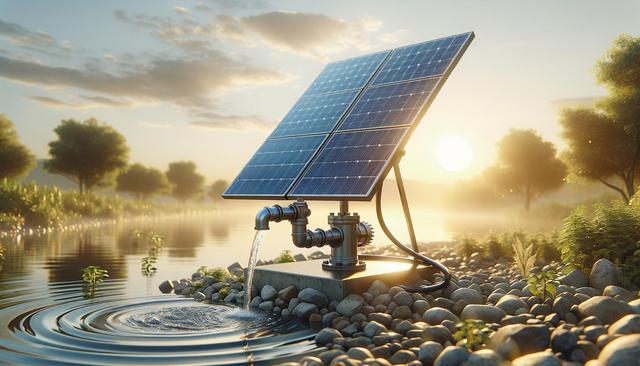Understanding Solar Water Pumps
Solar water pumps are systems that use solar energy to power a pump that moves water from a source such as a well, river, or borehole to where it is needed. These pumps are particularly beneficial in off-grid or rural areas where electricity access is limited or unreliable. The basic components of a solar water pump system include solar panels, a controller, and the pump itself. Depending on the application, the system may also include a water storage tank or battery for energy storage. Solar pumps come in two main types: surface pumps and submersible pumps. Surface pumps are ideal for shallow water sources, while submersible pumps are placed underwater and are used for deeper wells.
One of the major advantages of solar water pumps is their sustainability. They reduce dependency on fossil fuels and minimize environmental impact. Additionally, they operate with low maintenance requirements, especially since they have fewer moving parts compared to traditional diesel-powered systems. With solar technology becoming more affordable and efficient, these systems are increasingly accessible to farmers, homeowners, and businesses looking for reliable water solutions.
Applications and Use Cases
The versatility of solar water pumps allows them to be used in a variety of settings, from agriculture to domestic use. In agriculture, they are commonly used for irrigation, livestock watering, and aquaculture. For domestic purposes, they can provide water for drinking, cooking, and sanitation. These pumps are also useful in community water supply projects, especially in areas where infrastructure development is limited. Some common use cases include:
- Irrigating crops in remote farms
- Providing clean drinking water in rural villages
- Watering livestock in pasturelands
- Supplying water for garden and lawn maintenance
The ability to operate independently of the power grid makes solar water pumps a practical solution for disaster relief operations and remote construction projects. Their adaptability to different environments and water sources enhances their utility across various sectors.
Choosing the Right Solar Pump System
Selecting the appropriate solar water pump depends on several factors, including water source depth, required water volume, and sunlight availability. Conducting a proper site assessment is critical to determine the most effective configuration. Important considerations include:
- Pump type (surface vs. submersible)
- Flow rate and head (vertical lift)
- Solar panel size and orientation
- Battery storage options (if needed for nighttime or cloudy days)
For example, if you’re drawing water from a deep well, a submersible pump with a higher power rating may be necessary. Conversely, for a shallow pond or tank, a surface pump might suffice. Consulting with a solar technician or installer can help match system components to your specific needs. It’s also beneficial to consider future scalability if water demands are expected to grow.
Installation and Maintenance Insights
Installing a solar water pump system involves setting up solar panels in an area with ample sunlight, connecting them to the pump via a controller, and ensuring that all components are securely mounted and protected from environmental elements. While many systems are designed for easy installation, professional help ensures optimal setup and longevity. Routine maintenance is minimal but essential for system performance. Tasks typically include:
- Cleaning solar panels regularly to remove dust and debris
- Checking electrical connections and wires for wear or corrosion
- Inspecting the pump for clogging or mechanical issues
Because these systems don’t rely on fuel or large motors, their operational costs are significantly lower than traditional pump systems. However, in regions with extreme weather conditions, additional protection like shelters for the controller or enhanced mounting structures may be necessary to ensure durability.
Environmental and Economic Benefits
Solar water pumps contribute to environmental sustainability by reducing greenhouse gas emissions and eliminating fuel spills. Their quiet operation also makes them suitable for sensitive environments. Economically, while the upfront cost may be higher than conventional pumps, the long-term savings on fuel, electricity, and maintenance can be substantial. Over time, users benefit from:
- Lower operating and maintenance costs
- Reduced reliance on grid or fuel supply
- Improved water access and productivity
Solar pump systems often qualify for government incentives or subsidies, which can offset initial investment costs. Communities that adopt these systems not only gain reliable water access but also contribute to broader sustainability goals. In agricultural settings, improved irrigation can lead to better crop yields and enhanced food security, further supporting economic stability.
Conclusion: Empowering Sustainable Water Access
Solar water pumps represent a practical and forward-thinking approach to water management. Whether for farming, household use, or community-scale projects, these systems offer reliable, low-maintenance, and environmentally conscious solutions. By harnessing the power of the sun, individuals and communities can secure water access in a sustainable and cost-effective way. As technology advances and awareness grows, solar water pumps are poised to play a key role in building resilient water infrastructure worldwide.







